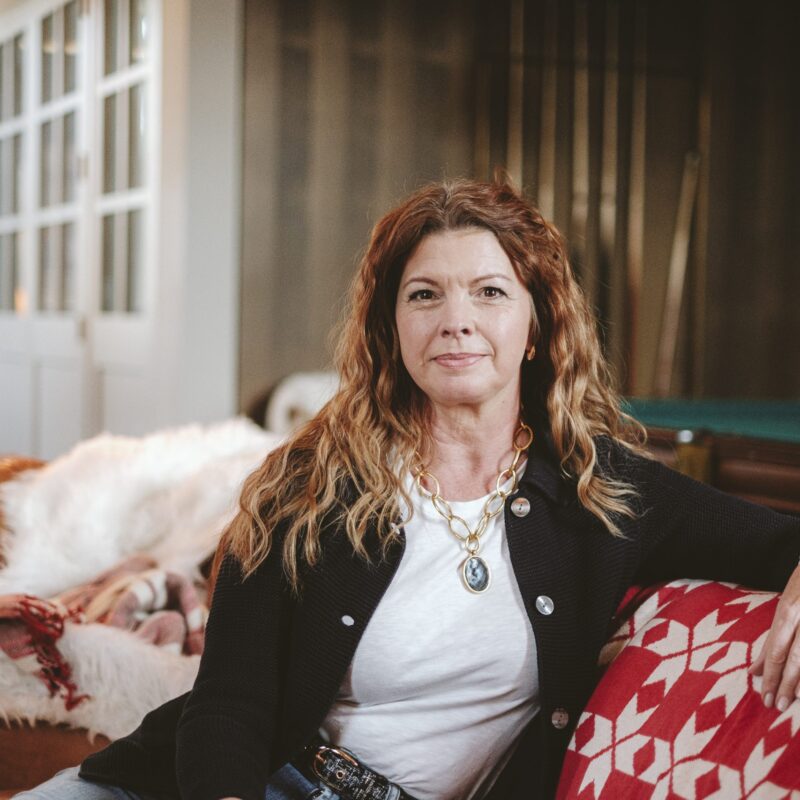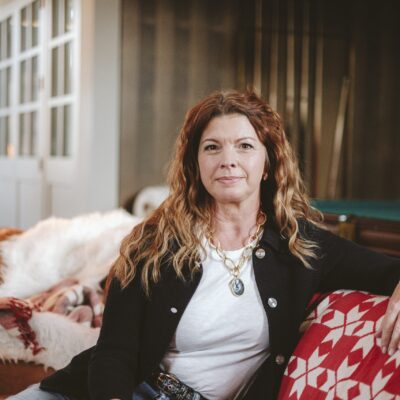Changes in latitude
Want to help stave off global warming? Plant a native tree
Unusually warm spells this winter feel nice, but not quite…right. The National Arbor Day Foundation’s newly released Hardiness Zone Map reflects quite a shift in temperature for many areas over the past 15 years, and that can mean changes in the tree species that flourish.
A wide stretch of northwestern Virginia parallel to the Appalachian mountain ridge has been bumped up to Zone 7, meaning its lowest temperatures range from 0 to 10 degrees. They were formerly in Zone 6, which starts at -10 degrees. For now, Charlottesville and Albemarle County remain where they’ve been—in Zone 7.
 The buzz is that climate change might actually alter the meaning of “native species.” If you find that vision unappealing, fight back by planting established native trees like redbud. |
There’s a simple action you can take to help: Plant trees, especially those native to Central Virginia. Trees zap CO2—a major contributor to global warming—plus, they help cool down cities in summer and ease chilly blusters in winter, reducing your year-round energy usage (and bills!). The good folks at Ivy Nursery have some suggestions in regard to native trees: Black gum, serviceberry, red maple, witch hazel, redbud, redcedar, river birch, and sycamore are all regulars around these parts. Native trees are also great choices because they’re more drought-resistant than others.
For other planting suggestions, or to take a look at the Hardiness Zone Map, go to www.arborday.org. They’ll even send you 10 trees for your $10 six-month membership…cheap, and green.—Bird Cox
More green houses in the pipeline
EarthCraft building seminar packs ’em in
If you’re planning to build or remodel a home in the next few years, and you’d like it to be green, you might worry about finding a qualified contractor. But if you’d been at last month’s EarthCraft House training session in the Albemarle County Office Building, you might feel more hopeful that “green house” has more than entered the lexicon; it’s entered the mainstream. About 40 local homebuilders and inspectors packed the joint to learn about energy-efficient, eco-friendly house construction.
Technologically, “We’ve made huge strides in all elements of life in this country except housing,” proclaimed Chuk Bowles, a white-haired and jovial presenter. Bowles went on to predict that, despite the home construction industry’s backwardness, “By 2015 you’re going to see whole subdivisions with PV [photovoltaic] arrays.”
EarthCraft is an Atlanta-based program designed to move builders closer to that goal, by offering a set of guidelines and a point system, through which individual houses can be certified. This seminar—covering everything from humidity levels in crawlspaces to indoor air quality—was part of its current expansion into Virginia.
If you’re interested in hiring a builder knowledgeable about EarthCraft standards, one place to start is the Virginia Sustainable Building Network, at www.vsbn.org. Judging by the attendance at this seminar, in coming years there will be more and more green builders to choose from.—Erika Howsare
Turn on the savings
Fluorescents are efficient, but how do they look?
Lately, everybody’s lighting up with excitement over fluorescent bulbs. No less a corporate behemoth than Wal-Mart has made a commitment to sell 100 million compact fluorescent bulbs (CFLs) a year by 2008. Locally, meanwhile, the Piedmont Environmental Council (PEC) has launched its “Enlighten” campaign, encouraging Virginians to pledge they’ll substitute CFLs for traditional incandescent bulbs. The hope is that total energy savings due to CFLs will convince Dominion Virginia Power there’s no need to build a controversial new high-voltage power line through Northern Virginia.
The stats on fluorescents are impressive: A CFL uses 75 percent less electricity than a standard bulb. It lasts 10 times as long and results in 450 fewer pounds of greenhouse gas emissions from power plants. So why haven’t we been buying these things in droves since they first came on the market in 1979?
 What is this alien object? Why, it’s a $30 energy savings. |
There are several reasons, but the biggest is probably aesthetic. Everybody knows that fluorescent light looks like absolute death. It’s green and unflattering to people and paint colors alike. Or is it?
We picked up a CFL at the Downtown CVS (for $4.99, as compared to $1.99 for four standard incandescents) and screwed it into a bedside lamp at home. The verdict? While not quite as warmly reminiscent of firelight as our trusty incandescent, the CFL cast a glow that was perfectly acceptable for reading—and nothing like the cold, podiatrist’s-office light we’d feared. When we considered it’s expected to save us $30 over its lifetime, it looked even better.—E.H.
Five Guys and one truck
One local driver reduces his household’s footprint
“A bit of an engineering project.” That’s how Brad Stoller describes the conversion of his 1995 Dodge Ram pickup truck from a diesel-burning engine to a diesel-or-grease-burning engine. For the sake of reducing fossil-fuel usage, Stoller bought a conversion kit from the website www.greasecar.com and installed it last June. Assorted mechanical glitches aside, he’s happy with the results: “It runs pretty much the same” on vegetable oil as it does on diesel, he says—and gets the same mileage per gallon (17).
The kit involves a second tank in the bed of the truck, a heating system for the grease that uses hot fluid from the truck’s radiator, and a set of valves that allow the truck to switch from diesel to grease. “You have to start it on diesel and warm up the engine,” Stoller explains. “The radiator fluid gets hot and heats up the oil. When the viscosity is a certain level, after about five minutes,” the truck’s ready to run on grease.
 Hamburgers and transportation are gloriously married in the modern grease truck. Brad Stoller’s been running his on restaurant waste since last summer. |
Stoller collects grease from his local Five Guys in Hollymead, then filters it using two 50-gallon barrels. A separate shed to house these barrels (built using salvaged materials, natch—from the set of Evan Almighty!) keeps potential spills contained. Fancier conversion kits, Stoller says, allow oil to be filtered on-board the vehicle as it’s running.
At $1,200 for the greasecar kit and $200 for the filtering system, the veggie-vehicle project hasn’t yet paid for itself, says Stoller, though it will in time. But other rewards have come. “It’s been good,” he says, “to do something to change my dependency on the oil business.”—E.H.





